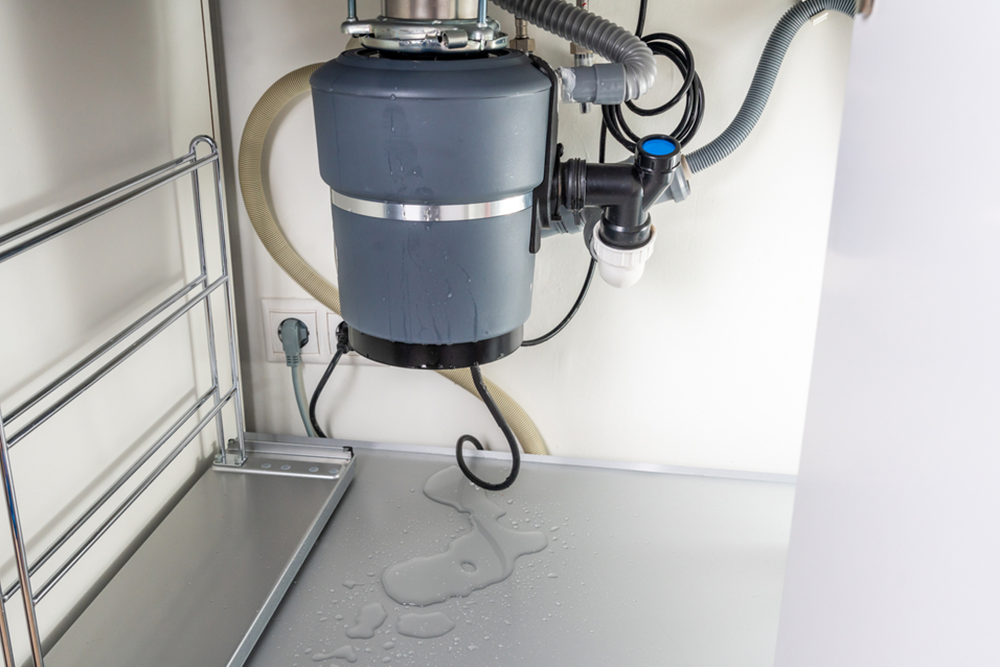Your Guide to Resolving a Leak in Your Garbage Disposal
Your Guide to Resolving a Leak in Your Garbage Disposal
Blog Article
How do you actually feel with regards to The Handy Guide To Fixing Your Garbage Disposal Leaking?

Waste disposal unit are important cooking area home appliances that help in disposing of food waste successfully. Nevertheless, a leaking waste disposal unit can be an irritating and unpleasant trouble to handle. Thankfully, numerous leakages can be repaired easily with a few straightforward steps. In this post, we will certainly talk about just how to repair a dripping garbage disposal successfully.
Intro
Waste disposal unit are installed under cooking area sinks and are developed to shred food waste right into smaller sized pieces, permitting it to pass through the plumbing system conveniently. While these devices are typically reputable, leaks can occur gradually because of damage, loose links, or damages to the system.
Common Reasons For Leakages in Waste Disposals
Worn Seals and Gaskets
Seals and gaskets play a vital function in avoiding water from leaking out of the waste disposal unit. Gradually, these parts can degrade, bring about leakages around the disposal device.
Loose Connections
The connections in between the garbage disposal and the plumbing system can end up being loosened over time, triggering water to leakage out during operation.
Cracks or Holes in the Disposal Device
Physical damages to the waste disposal unit, such as fractures or openings in the housing, can also result in leakages.
Identifying the Resource of the Leak
Prior to attempting to repair a dripping garbage disposal, it is important to identify the resource of the leak. This can typically be done via aesthetic examination or by conducting easy tests.
Visual Evaluation
Examine the garbage disposal device meticulously for any type of indicators of water leak. Pay close attention to areas around seals, gaskets, and link factors.
Evaluating for Leaks
One way to check for leaks is by running water through the disposal unit and checking for any noticeable indications of leak.
Devices and Materials Needed for Dealing With a Leaking Waste Disposal Unit
Before starting the repair service procedure, gather the necessary devices and products, consisting of a screwdriver, flexible wrench, plumbing technician's putty, substitute seals or gaskets, and epoxy or patching material for fixing cracks or holes.
Step-by-Step Overview to Repairing a Leaking Waste Disposal Unit
Shut off the Power
Prior to attempting any type of repairs, ensure that the power to the waste disposal unit system is turned off to prevent the threat of electrical shock.
Situate the Leak
Determine the specific location of the leak and identify the cause.
Tighten Connections
Make use of a wrench to tighten up any kind of loosened links between the disposal system and the plumbing system.
Change Seals or Gaskets
If the leak results from used seals or gaskets, remove the old components and change them with new ones.
Patching Cracks or Holes
For splits or openings in the disposal system, use epoxy or an appropriate patching material to seal the damaged area.
Evaluating the Garbage Disposal After Repair
As soon as the repair service is total, evaluate the garbage disposal by running water through it to make certain that the leak has been fixed.
Preventive Upkeep Tips to Avoid Future Leaks
To prevent future leakages, it is essential to execute routine maintenance on your garbage disposal. This includes keeping it clean, staying clear of placing non-food items or difficult objects down the disposal, and regularly checking for leaks or other concerns.
Conclusion
In conclusion, taking care of a dripping garbage disposal is a reasonably uncomplicated process that can be finished with fundamental tools and materials. By following the actions laid out in this post and practicing preventative maintenance, you can maintain your garbage disposal in good working problem and avoid expensive repair work in the future.
What to Do About a Leaking Garbage Disposal
A leaking garbage disposal often goes unnoticed until you confront a sopping cabinet, a foul-smelling puddle, or an audible drip-drip-drip from the unit. The fix can be frustrating, too, because the leak can stem from a number of components in the system. Fortunately, with a little sleuthing, you can zero in on the leak and—depending on the exact location—stop the icky oozing and repair the component that caused it. Worst case scenario, if it turns out that the garbage disposal must be replaced, installing a new one is a reasonable do-it-yourself task for those with basic plumbing skills. Read on to keep the cash you’d otherwise hand over to a pro.
Prepare to find the leak
Prior to testing the garbage disposal for leaks, unplug it at the wall outlet and turn off the power from the breaker box to prevent electrical shock. Then insert a watertight sink stopper into your sink drain and wipe the unit dry with a clean cloth. In any handy container, mix a few drops of food coloring into a few cups of water, and pour the dyed water onto the sink stopper to help you locate the leak.
Investigate the source
the top, where the disposal meets the sink drain the side, where the dishwasher hose or main drain pipe connects to the disposal or the bottom of the unit Inspect each of these locations while gliding a light-colored rag over the unit; the dyed water will readily show on the rag and reveal the location of the leak. If a leak isn’t immediately apparent, remove the sink stopper and pour a few more cups of dyed water down the sink drain, then check for leaks again. Leaks near the top of the unit are more likely to show themselves while the sink is plugged, while side and bottom leaks are more noticeable while the sink is unplugged.
The metal sink flange that sits directly inside the sink drain is typically sealed around the top with plumber’s putty (a clay-like sealant) and then secured from under the sink with bolts. If the plumber’s putty deteriorates, or the bolts loosen, the flange can no longer form a watertight seal between the sink drain and the disposal—which could cause a leak at the top of the unit.
To reseal the leaky flange, you must first detach the garbage disposal. Start by loosening the screws securing the main drain pipe to the disposal, then loosen the screws in the metal clamp securing the dishwasher hose to the disposal and detach the drain pipe and dishwasher hose from the disposal. Loosen the screws in the mounting ring that connects the disposal to the metal mounting assembly beneath the sink, then pull down the disposal and carefully set it on a clean, dry surface. Loosen the bolts in the mounting assembly with a wrench, then pull down the mounting assembly and set it near the disposal.

As an avid reader on Why Is My Garbage Disposal Leaking From the Bottom?, I figured sharing that topic was a good idea. Sharing is nice. Helping people is fun. I thank you for reading our article about The Handy Guide To Fixing Your Garbage Disposal Leaking.
Click Here Report this page